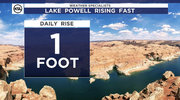I'm not a hydrologist by a long shot, have just always been fascinated by water infrastructure (dams in particular).
Your hypothesis is technically correct. I'd add is that all the water that evaporates into the atmosphere doesn't make it back into our water cycle. Depending on conditions, that water could end up on the other side of the planet. And, plants and animals consume water, but they don't expel 100% of that they consume. Also, soil retains water, if it didn't we'd all be living the the Sahara. So if you put a gallon of water on your lawn, maybe 20% of that makes it back into an aquafer (totally made up numbers). Multiply this by millions of people watering their lawns and washing their cars and you're "losing" a lot of water out of the system that is designed to provide for the population. So thats why in a region like ours that has unpredictable at best rain and snow to refill our storage capacity, it's best to limit your usage where you can. I water my lawn and wash my car, I just try to use as little water as I can get away with to do it.
And yes, yes, the bulk of water used in Utah is for agriculture and they need to change utilization techniques as well.


